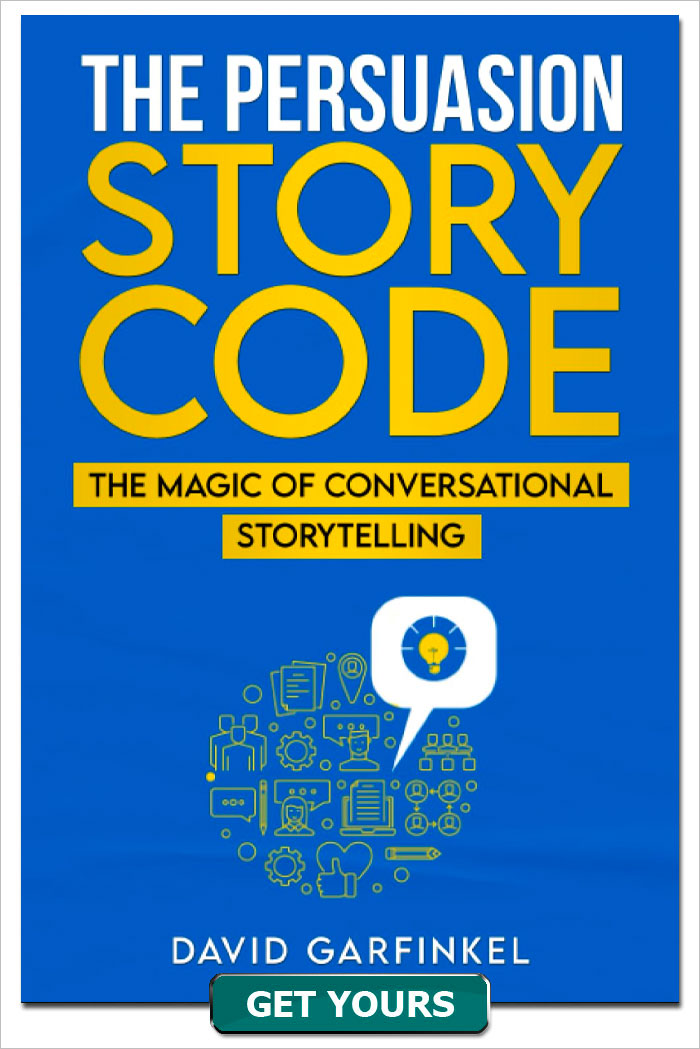Episode 006 - How to Write Better Bullets
Published by: David Garfinkel on 05-29-2017
Tweet
Bullet points can be tricky to get right, but they pay off big when you do. This week's episode will teach you how.
An Afghanistan vet and his wife went to the housewares department of a “big box” store. They were looking for an electric can opener. The vet was an amputee. He only had his right arm, but it worked fine. The salesman showed the couple the best model, and started rattling off the features: U.L. Approved, cordless operation, easy to clean, 5 star reviews online. The couple listened politely but didn’t say a thing.
This made the salesman nervous. “Are there any questions I can answer for you?”
“Just one,” said the vet with a smile. “If I get this, can I open a can with just one hand?”
The salesman was embarrassed that he had failed to mention this, but he recovered quickly enough. He said yes—and the couple happily bought a new can opener.
Every customer is like the vet. I don’t mean that every customer is an amputee. What I mean is that there’s usually one feature or benefit the prospect is looking for. Or maybe they’re not even looking for it, but when they find out about it, that alone may be enough to get them to buy.
Bullet points are where you highlight individual features and benefits. Better bullets = more sales.
And here’s the first thing I would like to remind you of:
Copy is powerful. You’re responsible for how you use what you hear on this podcast. Most of the time, common sense is all you need. But if you make extreme claims… and/or if you’re writing copy for offers in highly regulated industries like health, finance, and business opportunity… you may want to get a legal review after you write and before you start using your copy. My larger clients do this all the time.
Now, back to bullets.
How to screw up a bullet point – and how not to
- Don’t use bullet points to list your features example: you’ve got a device to hang business suits for guys six foot seven hand higher
Don’t: • One foot taller than your average standalone suit hanger
Do: • Built for guys like you, so the bottom of your suit will NEVER touch the ground
or even: • At one foot taller than other suit hangers, it’s built for guys like you. That means the bottom of your suit will NEVER touch the ground.
- Don’t make bullet points obscure, or hard to understand
- Don’t make them so short that people need to strain their brain to figure out what they’re all about
- DO: Focus on a benefit very close to what they prospect already wants, or would want if he or she knew about it
- DO: Use intrigue to “tease” the prospect about unusual benefits they might want, without always spelling it out 100%
example: you’ve got a tropical resort with a petting zoo for children.
Don’t: • Your children will have a great time with our friendly petting zoo crew: seven sheep, two ponies, four llamas and three kangaroos.
Do: • Your children will love our special petting zoo with familiar and exotic animals. They’re all safe, and your kids will learn about animals they’ve never seen before!
- DO:
Do your best to keep one simple idea to each bullet. Because if it is clear and compelling enough, one bullet alone can knock your prospect off the fence and convince them to buy.
• What the best copywriters do when they write their bullet points
- When you’re swinging for the fences, take some time crafting really good bullets
° One of my A-List friends, who has had multiple controls in the mail for a major mailer at the same time, told me he writes each bullet four times
° Another A-Lister, known for beating controls of other A-Listers, admitted that at times he would spend hours on one bullet
° If you’re going for a major-league grand slam, this is what you do. If you’re not in the most competitive market in the world, you don’t have to. But it certainly pays to put more time and craft into bullets than you have been doing in the past, unless you’ve been doing what these A-Listers have been doing.
° Most people don’t spend nearly enough time on bullets. Good idea to put more into them.
- Go over the whole product slowly and carefully – when you write and edit bullets, this is a time when you really need to slow down
° Pull out as many unique features as you can
° Make each feature into a bullet
° Then make each bullet as good as you can make it
° This is what the pro’s do
- Vary the length and style of your bullets
° All should be written in as few words as possible to get the idea across, like a headline or a subhead
° But some should be short and punchy
° Some can be longer and more in-depth
° As a rule, it’s always a good idea if you can start with one of the 5 W’s or an H: Who, What, Why, When, Where, How
5 tips for writing better bullet points
1. Know your prospect, inside-out, so you can write from the point of view that will most like get your prospect interested… intrigued… or SOLD.
Keywords: bullet points









